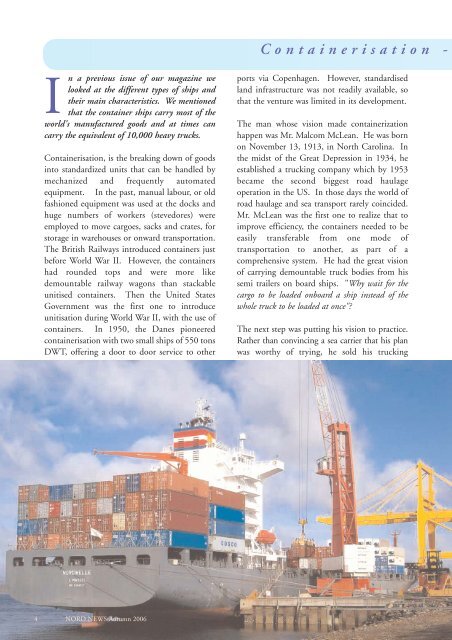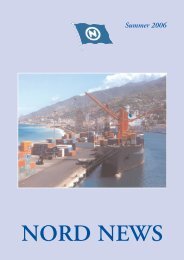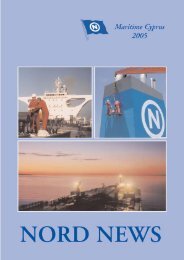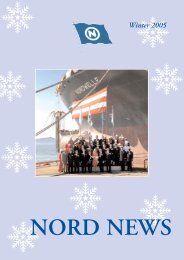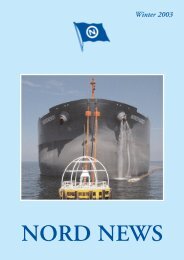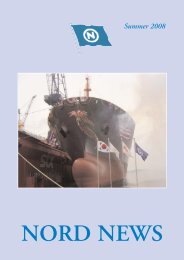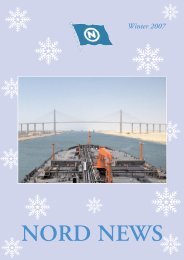Nord news
Nord news
Nord news
Create successful ePaper yourself
Turn your PDF publications into a flip-book with our unique Google optimized e-Paper software.
4<br />
In a previous issue of our magazine we<br />
looked at the different types of ships and<br />
their main characteristics. We mentioned<br />
that the container ships carry most of the<br />
world's manufactured goods and at times can<br />
carry the equivalent of 10,000 heavy trucks.<br />
Containerisation, is the breaking down of goods<br />
into standardized units that can be handled by<br />
mechanized and frequently automated<br />
equipment. In the past, manual labour, or old<br />
fashioned equipment was used at the docks and<br />
huge numbers of workers (stevedores) were<br />
employed to move cargoes, sacks and crates, for<br />
storage in warehouses or onward transportation.<br />
The British Railways introduced containers just<br />
before World War II. However, the containers<br />
had rounded tops and were more like<br />
demountable railway wagons than stackable<br />
unitised containers. Then the United States<br />
Government was the first one to introduce<br />
unitisation during World War II, with the use of<br />
containers. In 1950, the Danes pioneered<br />
containerisation with two small ships of 550 tons<br />
DWT, offering a door to door service to other<br />
NORD NEWS Autumn 2006<br />
Containerisation -<br />
ports via Copenhagen. However, standardised<br />
land infrastructure was not readily available, so<br />
that the venture was limited in its development.<br />
The man whose vision made containerization<br />
happen was Mr. Malcom McLean. He was born<br />
on November 13, 1913, in North Carolina. In<br />
the midst of the Great Depression in 1934, he<br />
established a trucking company which by 1953<br />
became the second biggest road haulage<br />
operation in the US. In those days the world of<br />
road haulage and sea transport rarely coincided.<br />
Mr. McLean was the first one to realize that to<br />
improve efficiency, the containers needed to be<br />
easily transferable from one mode of<br />
transportation to another, as part of a<br />
comprehensive system. He had the great vision<br />
of carrying demountable truck bodies from his<br />
semi trailers on board ships. "Why wait for the<br />
cargo to be loaded onboard a ship instead of the<br />
whole truck to be loaded at once"?<br />
The next step was putting his vision to practice.<br />
Rather than convincing a sea carrier that his plan<br />
was worthy of trying, he sold his trucking


